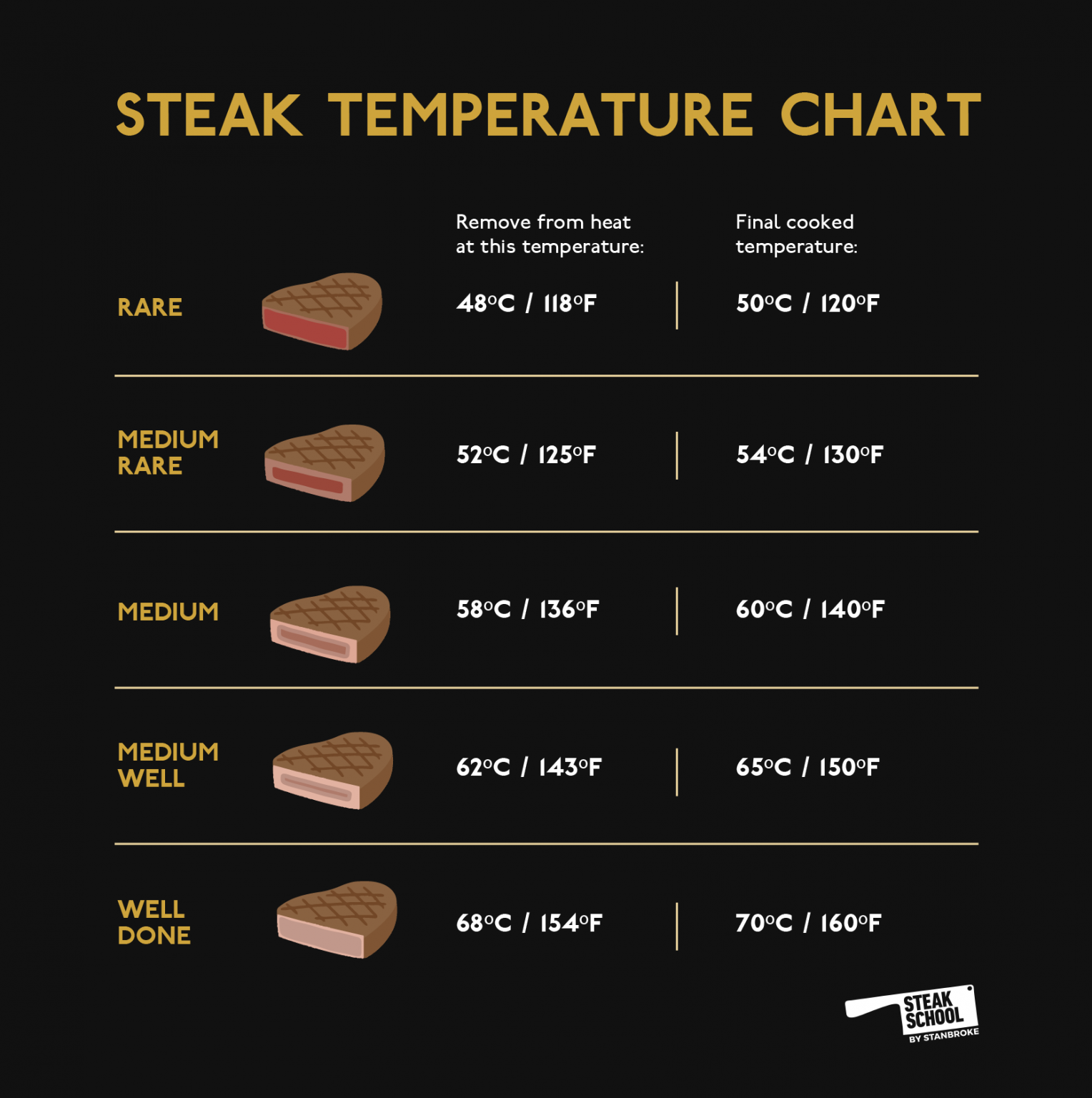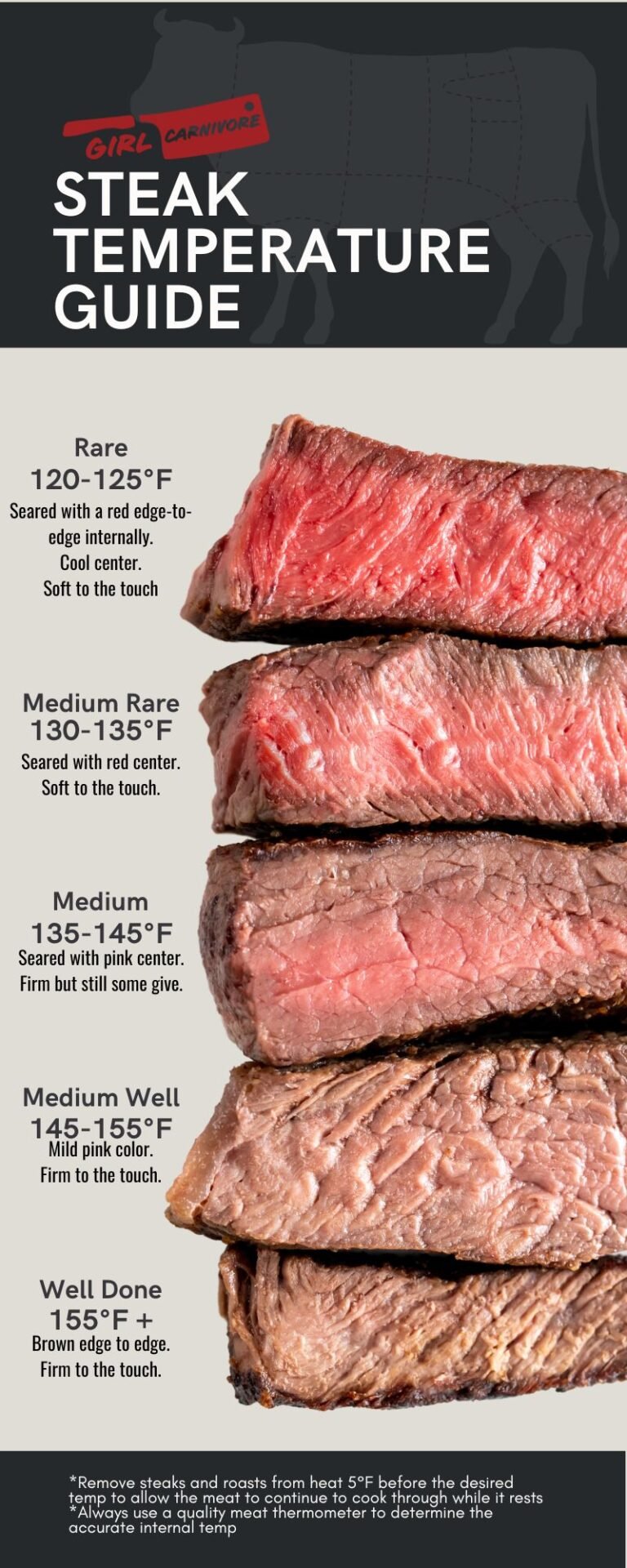Let’s face it—steak is more than just food. It’s an experience. But here’s the deal: if you don’t get the internal temperature of steak right, you might end up with something that’s either rubbery or raw. And no one wants that. Whether you’re cooking for yourself, impressing your friends, or trying to ace a dinner party, mastering the internal temp of steak is key. So, buckle up, because we’re diving deep into the science, art, and secrets behind getting that perfect steak every single time.
Now, I know what you’re thinking—“Isn’t it just about slapping a steak on the grill and waiting for it to look done?” Well, not exactly. The internal temperature of steak is where the magic happens. It’s what determines whether your steak turns out juicy, tender, and flavorful or ends up as a chewy disappointment. And trust me, once you understand how it works, you’ll never go back to guessing again.
So, why should you care about the internal temp of steak? Because it’s the difference between a $20 cut of beef and a $20 steakhouse experience. Whether you’re cooking a ribeye, filet mignon, or New York strip, knowing the perfect temp is the secret weapon you need in your kitchen arsenal. Let’s break it down step by step and make sure you’re ready to cook like a pro.
Read also:Hotblockchain Leaks The Ultimate Guide To Understanding The Buzz
Table of Contents:
- What is Internal Temperature of Steak?
- Why Does Internal Temp Matter?
- Types of Doneness and Their Temps
- How to Measure Steak Internal Temperature
- Common Mistakes to Avoid
- Tips for Achieving Perfect Steak
- Why Resting the Steak is Crucial
- Best Thermometers for Steak
- Safety Guidelines for Cooking Steak
- Conclusion: Master Your Steak Game
What is Internal Temperature of Steak?
Alright, let’s start with the basics. The internal temperature of steak refers to the heat level inside the meat when it’s cooked. This temp is what determines how well-done—or not—your steak is. Unlike the outside, which gets all crispy and caramelized from the Maillard reaction (science talk for browning), the inside is where the juiciness and tenderness come from.
Here’s the deal: different cuts of steak have different ideal temps, but most of them fall within a specific range. For example, a medium-rare steak typically clocks in at around 130°F to 135°F. But wait, there’s more! The temp keeps rising even after you take it off the heat, thanks to something called carryover cooking. More on that later, but for now, let’s just say precision is key.
Why Internal Temp is the Key to Steak Perfection
Think about it: how many times have you bitten into a steak only to find it either overcooked or still mooing on the inside? Yeah, that’s what happens when you don’t pay attention to the internal temp. By focusing on the temp, you can ensure your steak is cooked exactly the way you like it—no guessing games, no crossed fingers, just pure, steakhouse-level awesomeness.
Why Does Internal Temp Matter?
So, why should you care about the internal temp of your steak? Well, here’s the thing: the temp doesn’t just affect how your steak tastes—it also impacts its texture, juiciness, and overall eating experience. Overcook it, and you risk ending up with a dry, tough piece of meat. Undercook it, and you might be dealing with food safety concerns. It’s a delicate balance, but one that’s totally worth mastering.
Here’s a quick rundown of why internal temp matters:
Read also:Jameliz Benitez Onlyfans The Rise Of A Digital Sensation
- It ensures your steak is safe to eat.
- It preserves the natural juices and flavors of the meat.
- It gives you consistent results every time you cook.
- It helps you achieve the perfect level of doneness for your taste buds.
The Science Behind Steak Cooking
When you heat up a steak, the proteins inside start to break down and contract. This process affects the texture and juiciness of the meat. If you overcook it, the proteins get too tight, squeezing out all the juices. But if you hit that sweet spot, you end up with a steak that’s tender, juicy, and full of flavor. Science may sound boring, but trust me, it’s what makes steak magic happen.
Types of Doneness and Their Temps
Now, let’s talk about the different levels of doneness and their corresponding internal temps. Whether you like your steak rare, medium-rare, medium, well-done, or somewhere in between, knowing these temps will help you nail it every time.
Rare Steak (120°F to 130°F)
If you’re a fan of pink, juicy steaks, rare is the way to go. At this temp, the center of the steak is soft and cool, with just a hint of warmth. It’s perfect for those who love bold beefy flavors and don’t mind a little red in their meat.
Medium-Rare Steak (130°F to 135°F)
This is probably the most popular level of doneness for steak lovers. Medium-rare gives you a nice balance of juiciness and flavor, with a warm, red center that’s just begging to be eaten. It’s the gold standard for steak perfection.
Medium Steak (135°F to 145°F)
If you want a steak that’s cooked through but still has a bit of pink in the middle, medium is your jam. At this temp, the steak is firmer than medium-rare but still retains some moisture and flavor.
Medium-Well Steak (145°F to 155°F)
For those who like their steak cooked but not overdone, medium-well is the way to go. The center is mostly gray with just a hint of pink, and the texture is firm but not dry. It’s a good compromise if you’re cooking for a group with different preferences.
Well-Done Steak (155°F and Above)
If you’re one of those people who insists on well-done steak, here’s your temp range. The steak will be completely cooked through, with no pink in sight. While it may be safe to eat, it’s also likely to be dry and tough. But hey, to each their own!
How to Measure Steak Internal Temperature
Measuring the internal temp of your steak doesn’t have to be complicated. All you need is a good thermometer and a little bit of know-how. Here’s how you can do it:
Using a Digital Meat Thermometer
A digital meat thermometer is your best friend when it comes to cooking steak. Simply insert the probe into the thickest part of the steak, avoiding any bones or fat. Make sure the tip of the thermometer is in the center of the meat, and voilà—you’ve got your temp reading in seconds.
Using the Touch Method
Don’t have a thermometer handy? No problem. You can use the touch method to estimate the doneness of your steak. Press your finger into the steak and compare it to the softness of your palm. Here’s a quick guide:
- Rare: Feels soft and squishy, like the base of your thumb.
- Medium-Rare: Feels slightly firmer, like the middle of your palm.
- Medium: Feels firm, like the tip of your thumb.
- Well-Done: Feels hard and springy, like the top of your hand.
Common Mistakes to Avoid
Even the best steak chefs make mistakes sometimes. But by being aware of these common pitfalls, you can avoid them and cook like a pro:
- Not letting the steak rest after cooking.
- Flipping the steak too often on the grill.
- Using the wrong thermometer or inserting it incorrectly.
- Cooking the steak too quickly or at too high a temperature.
Carryover Cooking: What It Is and Why It Matters
Carryover cooking is the process where the internal temp of your steak continues to rise even after you’ve taken it off the heat. This happens because the residual heat from the outside of the steak transfers to the center. To account for this, you should remove your steak from the heat a few degrees before it reaches your desired temp. For example, if you’re aiming for medium-rare (130°F to 135°F), take it off the heat at around 125°F.
Tips for Achieving Perfect Steak
Ready to take your steak game to the next level? Here are some tips to help you achieve perfection every time:
- Let your steak come to room temperature before cooking.
- Season generously with salt and pepper before cooking.
- Use high heat to create a nice sear on the outside.
- Flip the steak only once to develop a good crust.
- Rest the steak for at least 5 minutes before serving.
Choosing the Right Cut of Steak
Not all steaks are created equal. Different cuts have different textures, flavors, and ideal cooking methods. Here’s a quick guide:
- Ribeye: Juicy and flavorful, perfect for grilling.
- Filet Mignon: Tender and lean, best cooked medium-rare.
- New York Strip: Meaty and robust, great for pan-searing.
- Sirloin: Budget-friendly and flavorful, ideal for quick cooking.
Why Resting the Steak is Crucial
Here’s a secret that most people don’t know: resting your steak is just as important as cooking it. When you take the steak off the heat, let it sit for a few minutes before slicing into it. This allows the juices to redistribute throughout the meat, ensuring that every bite is as juicy and flavorful as the last.
How Long Should You Rest the Steak?
As a general rule of thumb, you should rest your steak for about 5 to 10 minutes, depending on its size and thickness. Larger cuts may need more time, while smaller cuts can get by with less. Just remember, patience is a virtue when it comes to steak.
Best Thermometers for Steak
Not all thermometers are created equal, especially when it comes to cooking steak. Here are a few of our top picks:
- ThermoPro TP-20: Affordable and accurate.
- Meater Wireless Thermometer: Perfect for hands-free cooking.
- Instant Read Thermometer: Fast and reliable for quick temp checks.
Why Accuracy Matters
A good thermometer can make all the difference in your steak-cooking journey. With an accurate reading, you can ensure that your steak is cooked to perfection every single time. Don’t skimp on this step—it’s worth the investment.
Safety Guidelines for Cooking Steak
Finally, let’s talk about food safety. While steak is delicious, it’s also important to make sure it’s safe to eat. Here are a few guidelines to keep in mind:
- Cook steak to a minimum internal temp of 145°F for safety.
- Use separate cutting boards and utensils for raw and cooked meat.
- Wash your hands thoroughly after handling raw steak.
- Refrigerate leftovers within two hours of cooking.
Is Rare Steak Safe to Eat?
Yes, rare steak can be safe to eat as long as it’s cooked to an internal temp of at least 130°F and comes from a reputable source. However,



